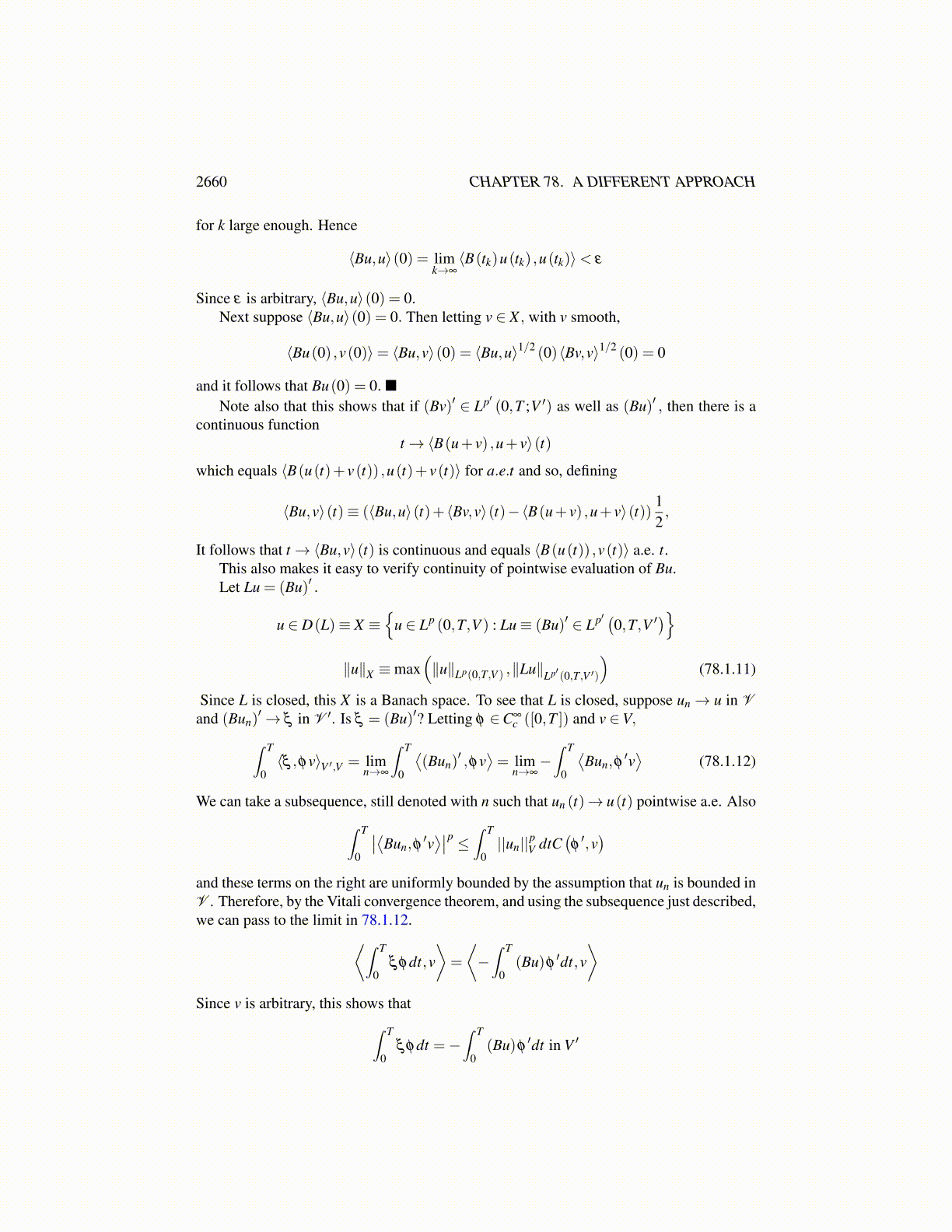
2660 CHAPTER 78. A DIFFERENT APPROACH
Theorem 78.1.6 Suppose V,W are separable Banach spaces, such that V is dense in Wand B ∈L (W,W ′) satisfies
⟨Bx,x⟩ ≥ 0, ⟨Bx,y⟩= ⟨By,x⟩ ,B ̸= 0.
Then there exists a countable set {ei} of vectors in V such that⟨Bei,e j
⟩= δ i j
and for each x ∈W,
⟨Bx,x⟩=∞
∑i=1|⟨Bx,ei⟩|2 ,
and also
Bx =∞
∑i=1⟨Bx,ei⟩Bei,
the series converging in W ′. In case B = B(ω) where ω → B(ω) is measurable intoL (W,W ′) , these vectors ei will also depend on ω and will be measurable functions ofω . In particular, we could let ω = t with the Lebesgue measurable sets.
The following result, found in [91] is well known. See Section 25.2 on Page 832.
Theorem 78.1.7 If a single valued map, A : X → X ′ is monotone, hemicontinuous, andbounded, then A is pseudo monotone. Furthermore, the duality map, J−1 : X → X ′ whichsatisfies ⟨J−1 f , f ⟩ = || f ||2 , ||J−1 f ||X = || f ||X is strictly monotone hemicontinuous andbounded. So is the duality map F : X → X ′ which satisfies ∥F f∥X ′ = ∥ f∥p−1
X , ⟨F f , f ⟩ =∥ f∥p
X for p > 1.
The following fundamental result will be of use in what follows. There is somewhatmore in this than will be needed. B is a possibly degenerate operator satisfying only thefollowing:
B ∈L(W,W ′
), ⟨Bu,u⟩ ≥ 0,⟨Bu,v⟩= ⟨Bv,u⟩ (78.1.10)
where here V ⊆W and V is dense in W .Also one can obtain the following for p ≥ 2. It is an integration by parts formula. See
Theorem 34.6.4 on Page 1211.
Proposition 78.1.8 Let p≥ 2 in what follows. For u,v ∈ X , the following hold. If B is timeindependent, then it is not necessary to assume p≥ 2. It is enough to assume p > 1.
1. t → ⟨B(t)u(t) ,v(t)⟩W ′,W equals an absolutely continuous function a.e., denoted by⟨Bu,v⟩(·) .
2. ⟨Lu(t) ,u(t)⟩= 12 [⟨Bu,u⟩′ (t)+ ⟨B′ (t)u(t) ,u(t)⟩] a.e. t
3. |⟨Bu,v⟩(t)| ≤C ||u||X ||v||X for some C > 0 and for all t ∈ [0,T ].
4. t→ B(t)u(t) equals a function in C (0,T ;W ′) a.e., denoted by Bu(·) .